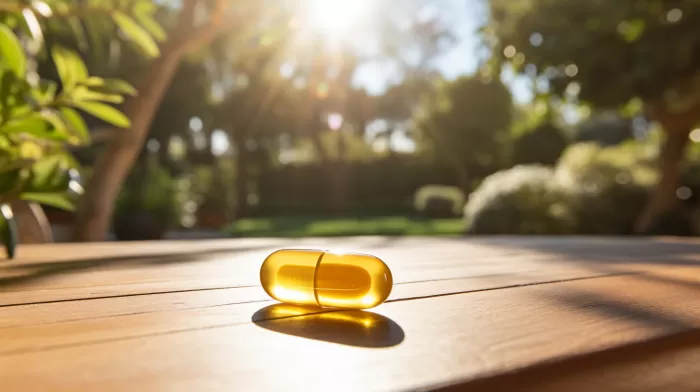Did you know that vitamin D3 has been found to reduce mortality by 6 percent in elderly women? A group of international researchers uncovered this connection after studying and analyzing multiple vitamin D research trials. What could this mean for the aging population of women? Well, it’s a game-changer, and here’s why.
The Power of Vitamin D3
Vitamin D aids in the absorption and maintenance of calcium, helping to support strong and healthy bones. It plays a crucial role in our overall bone health and preventing conditions like osteoporosis, which is particularly important for the elderly.
Interestingly, this study found that the benefits of vitamin D seem to be specific to the D3 form. While other forms of vitamin D were not shown to have significant benefits, researchers urged for more randomized trials to explore the potentials of other forms of vitamin D.
The Study
The international research team, led by Goran Bjelakovic, M.D., analyzed 50 randomized trials involving 94,148 participants. Among these participants, 79 percent of them were women with a mean age of 74 years old. Most of them were living in managed care facilities, like nursing homes or residential care homes.
Pooling the findings from these trials, the researchers uncovered that vitamin D3 appears to be beneficial in reducing the mortality rate among elderly women. This discovery presents a significant opportunity to improve the elderly population’s health and quality of life, especially for women who are more likely to suffer from conditions like osteoporosis and fractures.
Collateral Benefits
Aside from the potential to reduce mortality, vitamin D holds numerous other health benefits that can positively impact seniors’ lives. Studies have shown that adequate levels of vitamin D can strengthen the immune system, warding off infections and preventing illnesses. Additionally, it plays a role in reducing the risk of certain chronic diseases like diabetes and multiple sclerosis.
According to the National Institutes of Health, maintaining sufficient vitamin D levels can also support lung function, cardiovascular health, and brain development. The combination of these benefits makes vitamin D3 an essential powerhouse for the elderly, especially women.
How to Obtain and Maintain Adequate Vitamin D Levels
There are several ways to ensure that you are getting enough vitamin D, particularly in the D3 form. While there are small amounts of vitamin D in certain foods like salmon, tuna, and fortified dairy products, the easiest and most efficient way to absorb vitamin D is through sun exposure. Just 15 minutes of sun exposure on your face, arms, and legs twice a week can help produce sufficient amounts of vitamin D.
However, with age, the skin’s ability to synthesize vitamin D from sun exposure diminishes. It’s essential to consult with your healthcare provider to check your vitamin D levels and consider supplementation if necessary. The recommended dietary allowance (RDA) for vitamin D varies based on age, sex, and life stage, but for women aged 51-70, it’s 600 IU (15 mcg) daily, and women aged 71 and older, it’s 800 IU (20 mcg) daily.
The Future of Vitamin D Research
As the connection between vitamin D and longevity gains more attention, it’s crucial for future studies to continue evaluating the health benefits of different forms of vitamin D. As Dr. Bjelakovic expressed, “We need to have more randomized trials that look specifically to see whether these forms of vitamin D do or don’t have benefits.”
Time will tell what additional benefits researchers may uncover for other forms of vitamin D and the general population’s health status. But for now, it’s clear that vitamin D3 is an essential component for elderly women’s well-being and longevity. So, let’s spread the word and strive for a future where our senior loved ones are thriving with optimal health.


![8 Simple Tips for a Longer, Happier Life [See Them Now]](https://naturalhealthreserve.com/wp-content/uploads/2024/01/8-healthy-tips-live-longer-slideshow-300x168.webp)
